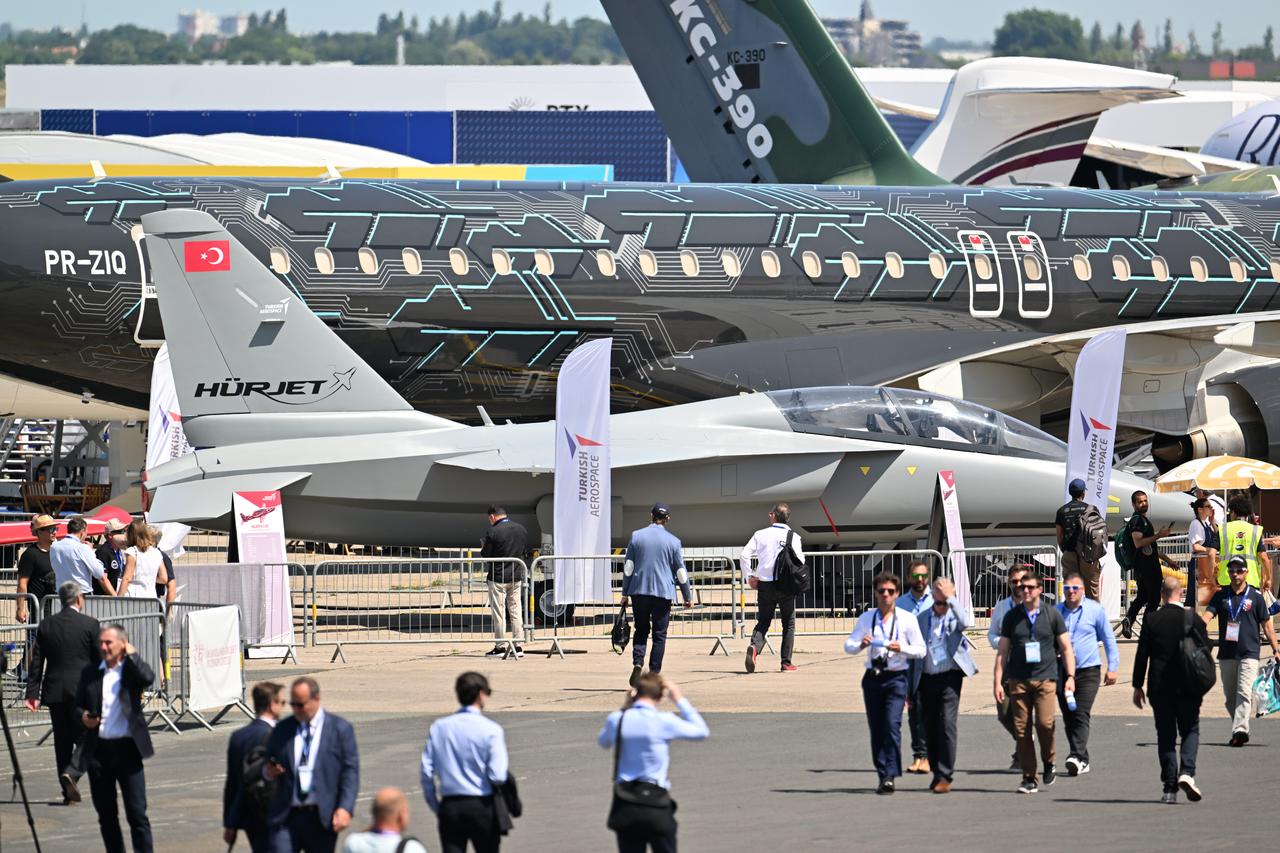
Spain's Defense Ministry announced a €1.375 billion ($1.611 billion) investment in a new generation advanced jet trainer aircraft program based on Türkiye's Hurjet, with first aircraft deliveries expected in 2028.
Spanish Defense Minister Margarita Robles reportedly informed the Senate Defense Commission about the new advanced trainer aircraft program for the Spanish Air Force and Space, which seeks to replace the F-5M fleet through co-development between Spanish and Turkish industries under a bilateral program.
Robles emphasized the "Spanish character" of the aircraft, despite its roots in the Turkish Hurjet design, affirming Spain's full design authority and co-development role, according to Infodefensa.

Robles recalled that in December 2024, the Secretary of State for Defense and the Turkish Ambassador to Spain signed a Memorandum of Understanding (MoU) for the co-development of the advanced trainer aircraft.
A memorandum of understanding for co-development was signed in December 2024 between Spain and Türkiye, followed by an industrial agreement signed during the International Defense and Security Fair (FEINDEF) on May 14.
Signatories included TAI, Airbus, and 15 Spanish firms, such as Aciturri, Aernova, Indra, GMV, Sener, and Grupo Oesia.
The project, named "Integrated Training System–Combat (ITS-C)," is designed to develop both an advanced jet trainer aircraft and a ground-based training system (GBTS) with modern simulation tools.

Robles reported that the first six aircraft will be received in 2028 and the remaining units in 2029 to reach 18 aircraft.
Subsequently, the national GBTS will be implemented so that the first versions of the aircraft will begin to arrive "already Hispanicized with modifications that will be agreed upon, including flight envelopes compatible with the fighters that will fly later, or avionics systems and latest-generation information presentation configurable via software, allowing future transition toward fifth- and sixth-generation fighters."
The minister emphasized the important impact the program will have on consolidating the defense technological and industrial base and the returns that will occur in Spain.
She stressed that "although the base is the Turkish aircraft, the agreement aims to co-develop a Hispanicized advanced trainer aircraft with national design authority." She also highlighted the importance of developing the national GBTS.
According to the minister, the entire program will have an investment of $1.6B, which will allow "the development and acquisition of pilot training capability, with an air segment of between 28 and 30 aircraft for teaching and flight missions."
She also highlighted the implementation by Spanish industry of a comprehensive Ground Based Training System (GBTS) to support pilot training, whose objective "is to provide a safe, cost-effective, and efficient training system that complements flight training, including advanced simulators, digital instruction systems, and performance analysis tools."

The program will have special importance in the industry of the Community of Madrid, Andalusia, Castilla-La Mancha, the Basque Country, and Extremadura, leaving an impact of €2.887 billion ($3.3 billion), generating 792 direct jobs with a total impact of 2,614 positions.
It is "a project that will require senior technicians in engineering and qualified labor to support production chains. All of this, in collaboration with technological centers and universities in different territories, also promotes territorial integration," she said.
TAI’s Hurjet, the foundation of the Spanish trainer program, recently achieved Mach 1.2 during test flights—outperforming competitors like the Boeing-Saab T-7 Red Hawk and Leonardo M-346.
The twin-seat, single-engine aircraft is designed for both jet training and light combat roles, with future naval variants planned.
TAI has agreements in place for 100 F404-GE-102 engines from GE Aerospace and aims to deliver 100 Hurjets to the Turkish Air Force and 300 units to global customers by the 2030s.
Mehmet Demiroglu, TAI General Manager, has recently stated that the platform is positioned to become the future training aircraft for NATO forces. "This tells us the product we have is a good product," Demiroglu told Aviation Week.
"Once the Turkish Air Force starts using it, and inshallah, Spain too, this platform could become the training platform of NATO countries," he added.